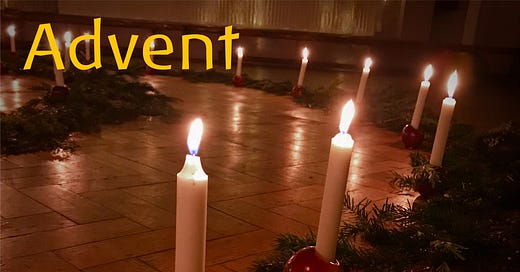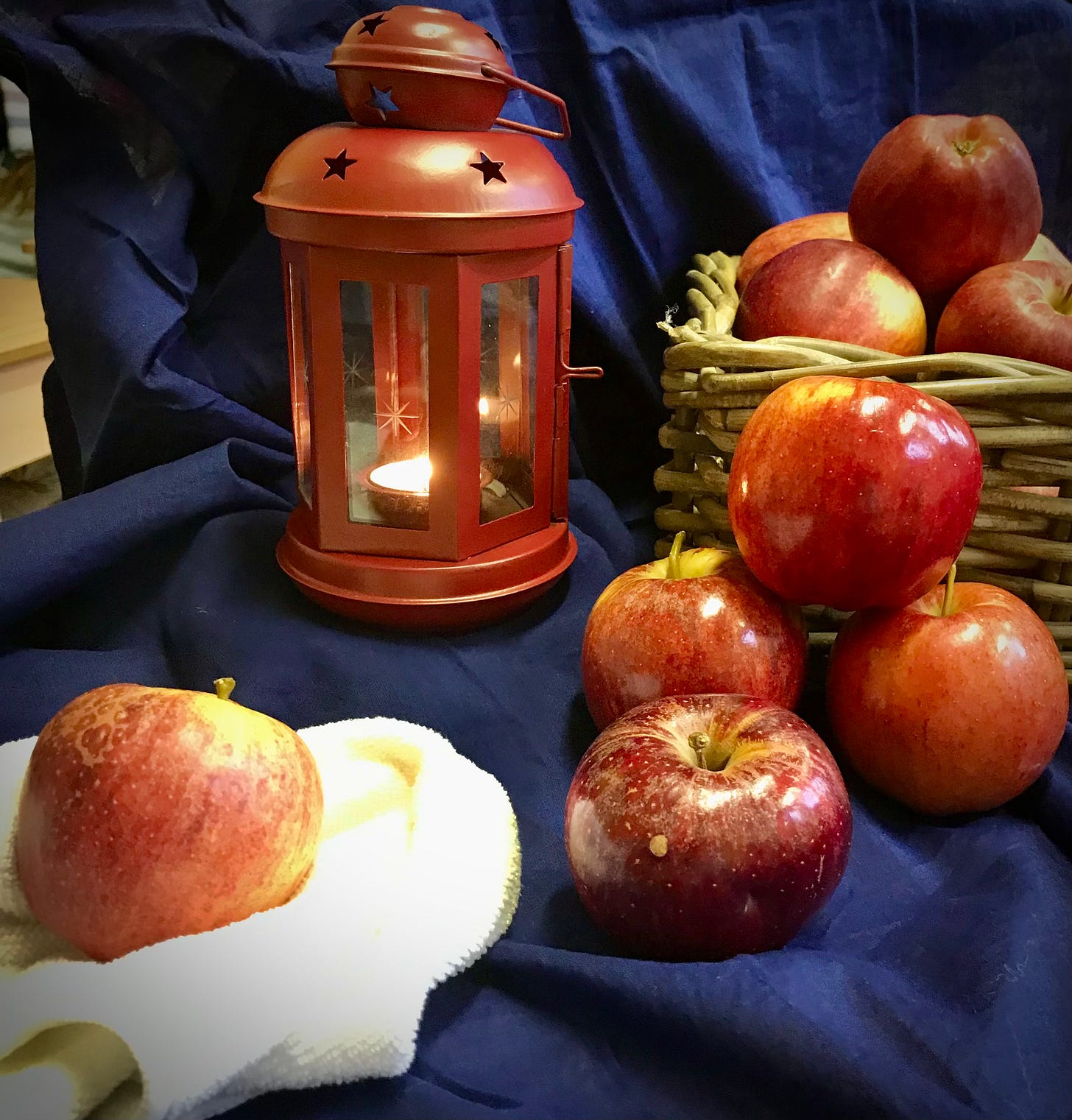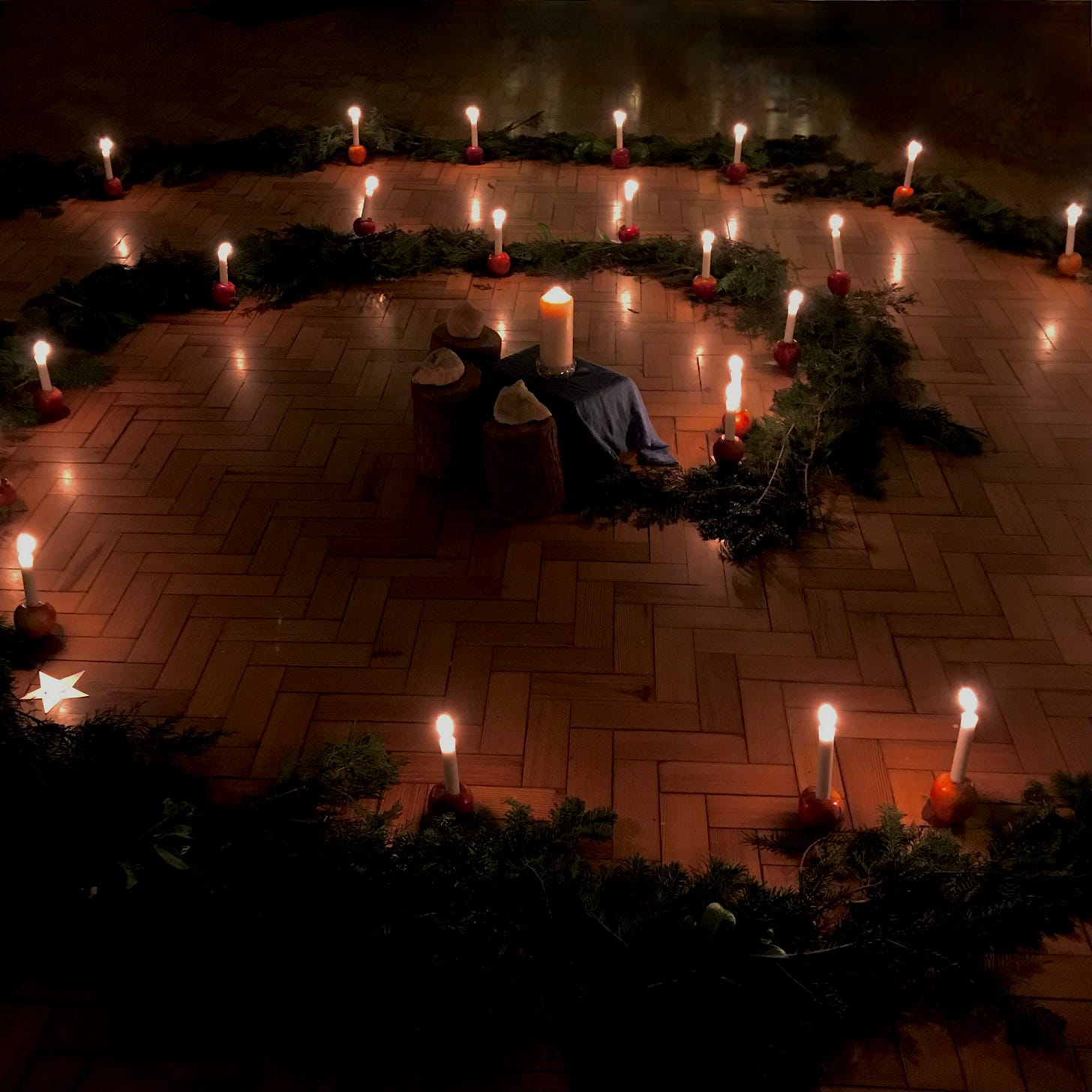Advent is a very important festival in the year as it leads us into the time of Christmas. The previous large festival that we've done will have been Michaelmas and in a certain way Michaelmas prepares the ground for the Advent festival. When we look at our festivals, we always have to kind of go back and try and find the source and essence of these festivals because our festivals are often very much tainted by the world we live in. So, we need to go back to the source and look at what are the elements of a festival that are important for us to hold strongly when we celebrate them for ourselves or with children.
Steiner spoke about how festivals have become disconnected. He spoke about a time before Christianity when festivals were very much connected to the earth and that with the arrival of Christianity festivals have lost their connection between the spiritual and the earth and that it is our responsibility to find new ways to reconnect the spirit and the earth in festivals. Another thing our festivals suffer from quite strongly in our time is materialism. The excessive capitalist environment is a feeding ground for total materialistic abandon.
Festivals now are often based around consumer products and excessive and over the top decoration, a “keeping up with the Jones’”. For example you go into and stores and there are products for sale related to a specific festival long before the time of the festival and this creates a disconnect between ourselves and our spiritual needs for a festival and the reality of what is in the world in front of us.
So, lets we take a step back and we look at Advent.
Advent is a festival about waiting, about waiting for something to come.
When we put this into context of the northern hemisphere where the festival originated from, we look at the time where we're going into the darkness. We're approaching midwinter, the darkest time of the year and as the darkness increases, we have festivals where we are bringing light into the darkness. So we have the Martinmas festival and various other festivals of the type where lanterns are brought out into the night time to bring light into the darkness.
Particularly with Advent we are looking at a festival that is teaching us to be patient, to wait, to be expectant. Now this is something that's not common in our 21st century world. We live in a world where everything is on demand. We order something from Amazon, or some online store and we expect it to be delivered the same day or at the latest next day. We log on to Netflix and we expect to see a movie straight away. Everything is right here, right now. We have lost, in a sense, in our society, this capacity to wait and that is what is important about the Advent festival, this waiting, this expectation.
So the Advent festival encompasses the four Sundays before Christmas. The first Sunday usually being the last Sunday in November and this year the first Advent Sunday will be the 24th of November. So what is it that we do within ourselves and with children when we prepare and work with this festival? We create something to show a period of time, a journey.
So if we're waiting, we mark that passage of time and this is where the tradition of an Advent calendar came from. Where there was something that allows us, with children, to mark the progress of time. Unfortunately, commercial Advent calendars have become something now which are totally disconnect from the true meaning of the festival. When you get a advent calendar now, you get a chocolate every day or a gift every day. This shows how totally we have not understood the meaning of Advent. Advent is waiting. Advent is a time where you build expectation by delaying.
That the only thing your Advent calendar should do is mark the passage of time and that we wait. From a more spiritual point of view we are in the darkness waiting for the light that comes with the Christmas festival. So there's this waiting.
If I'm getting a gift or a little present every day I'm not waiting. I'm just looking forward for the next day and the next day and the next day and we get back into this on-demand thing. We are not waiting for Christmas but simply waiting for our next gift. So when we look at creating Advent festival activities we need to look at how do we teach children in our time to be patient, how to wait.
So look to Advent calendars where one can create images or the movement of figures on a nature table where we mark the passage of time and that actually that movement should be the daily excitement in a sense. So we move through this process and then we can also mark each Advent Sunday with something more special.
Now traditionally in Waldorf schools and Anthroposophical homes we would concentrate during the first week by looking at stories or placing things on the nature table that are from the mineral kingdom, stones and crystals and the like. In the second week we would look at the plant kingdom, so we can start putting small plants and bits of greenery onto the nature table. The third week we’d look to the animal kingdom and we can start putting small felt animals or wooden animals onto the nature table. Then when we come to the fourth week, here we can introduce the shepherds, the human being, as we wait for the light to arrive. This is a very quiet and still time, so when we celebrated Advent with children it should be a quiet and peaceful time.
On the Advent Sundays we can light a new candle, a new candle each week on the Advent wreath with its four candles. This quiet lighting of candles is a time of waiting. If we go back and we look at one of those classic advent carols, The Carol of the Advent, we have that line “make your house fair as you are able” so its about preparing and getting yourself ready for the festival of light, the coming of the light.
So it's this building up, this process and by building up you create an expectation we are getting somewhere. And that's really important and something we've lost almost entirely from our society.
And it's something we need to think about as teachers, how do we teach children waiting and patience. Another thing that is very connected to Advent is the Advent Garden or the Advent Spiral. Now this is a festival that has come out of the Anthroposophical movement and has been developed over the years, in various institutions around the world.
It was originally started by Karl Koenig who worked with Steiner directly. The festival, originally, had a huge amount of spiritual significance and is very connected into the esoteric Christian ethos.
There is significance for every element and detail of the Advent Spiral. Over the years this has changed as people have moved away from a religious context but still want not to be left out. There are elements in the Advent Spiral that are really important and so we need to briefly explore some of them.
The Advent Spiral is a festival where a spiral is created on the ground. Originally a double spiral, so you walk in one way to the centre and then you turn around and you walk out on another path. The double spiral is usually created out of moss and or greenery and in amongst it there will be crystals and plants as it is built up.
At the centre is a large log or a table with a large candle alight on it. The teachers would set this up in a room, often taking many hours to set it up as beautifully as possible.
When the children arrive for the festival they enter the prepared room in absolute silence and the room is dark, that is, except for that central light.
There should be someone playing music, on a harp or other gentle sounding instrument. At the entrance to the spiral there will be shiny red apples with a candle placed in it. Sometimes a teacher or older student will be dressed as an angel who can do the first journey through the spiral as an example and also to hand each child an apple as the enter the spiral. Each child takes a candle and walks into the spiral until they get to the centre, there they light their candle on the central candle and on the spiral path out they choose a place along the path to place their apple. As the amount of children who complete the journey increases, so the room gets filled with more and more light.
This festival is celebrated very differently in different schools and each school has their own traditions around it.
Originally, the way that it was created, this festival is always held on the first Advent Sunday as it's getting dark and become the starting point of this journey we're going to make during Advent. From out of the dark we will finally arrive closer and closer to the light, Christmas. This festival was originally created only for children under the age of nine children, those that have not gone through the Rubicon. Karl Koenig spoke clearly about the fact that as adults we need to sit and observe and not walk the spiral, that we do the festival within ourselves rather than physically.
When you've been part of these festivals for years and you watch the children you will see how a young child goes through the spiral, they have a sense of awe and wonder that is a privilege to observe. It is one of the most beautiful festivals that are celebrated in the Waldorf schools and the Anthroposophical community. If you are able observe the difference between a child walking the spiral and an adult, it is very different as an adult carry an ego consciousness into the spiral which create a totally different mood.
In many schools now there will be a separate festival for the young children and for the adults that wish to take part so that the mood the children create is not broken by the adult intellectual mood.
It is a very humbling experience to be part of one of these festivals. I know as a teacher, I've taken part many times and to just sit and watch these children go through the spiral and go through this quiet peaceful festival is truly beautiful and I hope all of you have an opportunity in your surroundings to connect with a community that does the festival so that you can experience the wonder of it.
Advent is also situated in the time of the year where we're in the darkness and looking for the light and this is the same for many religions. There are festivals of light in the dark time of the year, you've got Hanukkah, Diwali and many more.
Now I know this is very different if you live in the southern hemisphere where you are actually coming up to midsummer, so a festival needs to be thought about very carefully when you do that because an advent festival which is based about going into the darkness needs to be reimagined for an environment where you are in the light already. So it's a festival where we need to again find this inner light.
So that is a brief picture of some of the aspects of the Advent festival
.







